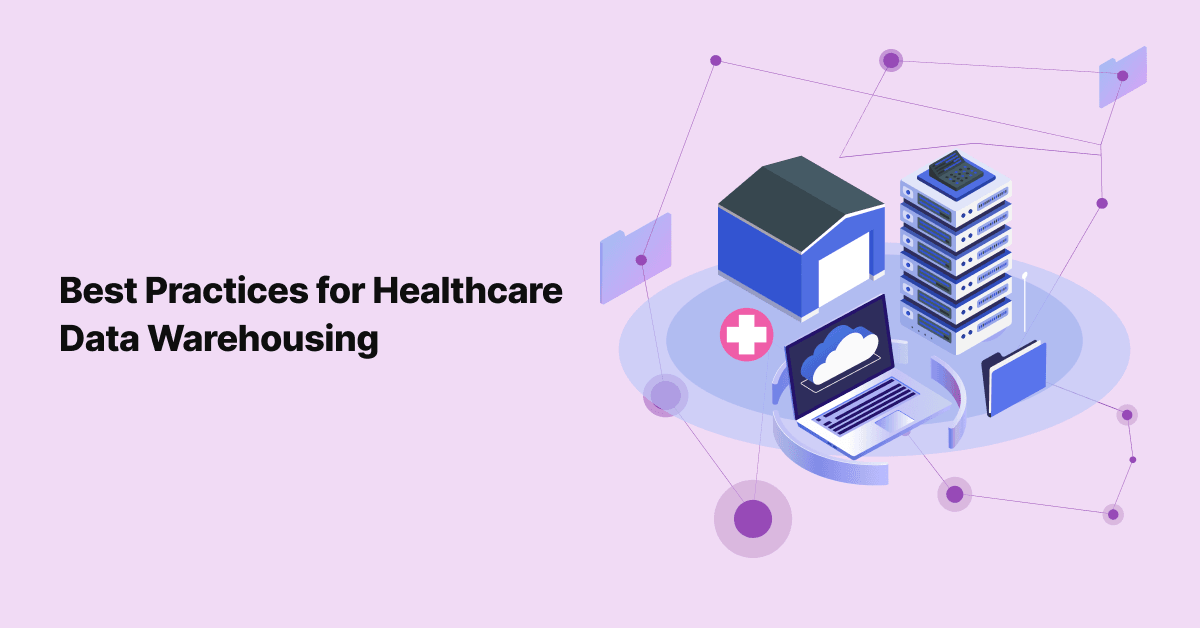
The List of Best Practices for Healthcare Data Warehousing
From Electronic Medical Records to billing information, healthcare organizations are collecting more data than …

Data warehousing in healthcare is an increasingly important tool to collect, store, and analyze the massive amounts of data that medical providers must capture to comply with regulations. But if it’s not designed and implemented correctly, a healthcare data warehouse can quickly become a costly liability. In this article, we identify the biggest mistakes made while creating or managing a healthcare data warehouse, so you know what pitfalls to avoid for successful implementation.
Some of the biggest mistakes in healthcare data warehousing include:
The lack of a comprehensive governance framework in healthcare data warehousing is an increasingly pressing issue. Without proper governance in place, there is a greater risk of exposing confidential patient information, introducing errors or inaccuracies in the data, and making incorrect reporting decisions.
It is essential that healthcare organizations create a well-defined and rigorous framework to ensure the accuracy, security, and usability of their data warehouses. Such a framework should identify stakeholders, develop roles and responsibilities with respect to data security and accuracy, monitor compliance through auditing procedures, and establish data quality metrics as well as operational processes and procedures for managing changes to the warehouse architecture. Effective implementation of such a governance structure will ensure the safe and private use of this critical resource.
In the healthcare industry, data warehousing is a highly important field, yet defining it in terms of technology rather than business needs can create serious issues. By primarily looking at the technological components of a data warehouse, key considerations for how best to meet the necessary business needs may be neglected.
Establishing a comprehensive definition of a data warehouse’s objectives and categorizing items accordingly can help ensure that technology is employed in an effective way that meets the organization’s requirements and enables it to make informed decisions. The specific requirements of each healthcare organization should be taken into consideration while building its data warehouse in order to ensure its success and usefulness.
The importance of involving stakeholders in the design process of healthcare data warehousing cannot be overstated. Stakeholders shed light on the patient’s experience, medical expertise, and organizational objectives that are integral to creating an effective data warehouse system. By including patients, clinicians, administrators, and other stakeholders early in the process, developers ensure that the healthcare data warehouse meets the needs of those it will ultimately serve.
Without proper stakeholder participation, a valuable opportunity to make improvements to the system is lost. The successful implementation of a healthcare data warehouse requires not only a thorough understanding of best practices from design and technology professionals but also an assessment of criteria from those who operate it or utilize its output. Therefore, engaging stakeholders should be an important part of any design strategy for this type of infrastructure project.
Having to build a data warehouse without always getting a clear understanding of how the source systems are organized is an inherent challenge in data warehousing in the healthcare sector. This can compromise accuracy and completeness in the resulting data warehouse, which then impacts the analytics running on that data.
The key to success here is to ensure there is sufficient engagement up front with those responsible for managing and maintaining source systems so the technical staff building the data warehouse can get a comprehensive view of how it works and what needs to be taken into account when designing the target structure. Without this, it will be difficult to create a healthy data warehouse with reliable output.
The use of data warehousing in healthcare is essential to deliver better outcomes and services, but increasingly, organizations are focusing more on the quantity and performance of data than on their usability and quality. This has led to situations where the utility of collected data is limited, even though there is an increased volume.
To ensure that valuable insights are gleaned from data warehousing initiatives, it is critical for healthcare organizations to focus on both the quantity of data and its quality. By leveraging the right approaches and technologies, such as Artificial Intelligence (AI) algorithms, data integration tools, Natural Language Processing (NLP), etc., they can accurately assess and manage the quality of collected datasets. Doing so will enable deeper analysis that can be used to identify potential opportunities while helping save time, resources, and money.
This is one of the biggest challenges that is encountered in healthcare data warehousing. These manual processes can be labor intensive and require manual intervention in order to ensure accuracy. Additionally, they can limit scalability and speed when dealing with large volumes of data.
To overcome these issues, healthcare professionals should focus on leveraging automated technologies such as enterprise management systems and data loader tools to improve precision and streamline data loads. Doing so will improve the accuracy and efficiency of healthcare data warehouses, allowing organizations to gain better insights from their data in a faster timeframe.
In order to avoid making mistakes in healthcare data warehousing, it is important to have a clear understanding of the various types of data warehouses and how they are used. In addition, it is essential to have an experienced team who can design and implement the warehouse according to best practices. By following these tips, you can ensure that your healthcare data warehouse will be a valuable asset to your organization. To understand more about healthcare data warehousing and the pitfalls to avoid, you can check out this Bootcamp on designing and building and modern healthcare data warehouse.
Join over 3,200 subscribers and keep up-to-date with the latest innovations & best practices in Healthcare IT.

From Electronic Medical Records to billing information, healthcare organizations are collecting more data than …

Data-driven decisions are the way of the future. Not only is there wisdom in using facts versus assumptions to …

There are many opportunities in healthcare IT that have been exponentially embraced as our entire world faces …